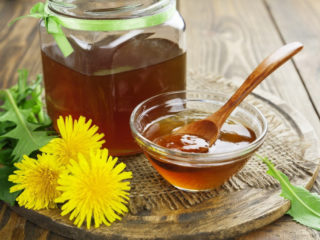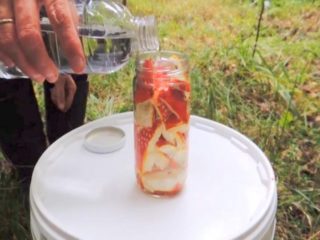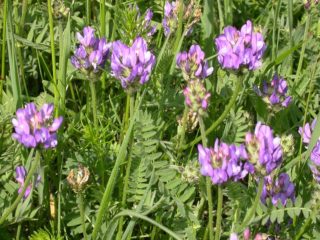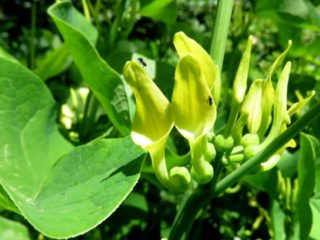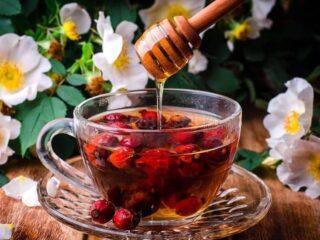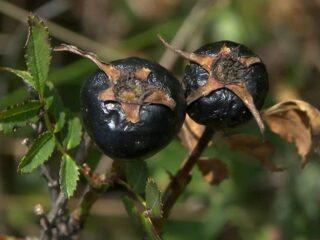Content
There are many legends associated with sage. For example, in Ancient Egypt it was considered a healing agent that could prevent any illness, and in Ancient Greece the herb was the apotheosis of gardening. For centuries, the plant has also been used for cosmetic purposes. Sage for hair can add shine and prevent baldness. Some people use it to color and disguise gray hair.
Benefits of sage for hair
For gardeners, grass is of great value, due to the large number of useful substances in its composition. Fresh shoots contain: linoleic acids, tannins, essential oils, alkaloids, organic components, glycerides.
Sage leaves are useful for strengthening hair. They fight split ends, accelerate growth and give smoothness. Experts have found that when used correctly, the herb also strengthens hair follicles, eliminates irritation, and removes dandruff.
Hence, harvesting fresh hair shoots helps in dealing with any problems arising on the skin.

Sage is used for preventive purposes, but its scope is not limited to this, because the herb can prevent problems that have already appeared
Using sage for hair
Such a useful culture cannot go unused; sage oil for hair is prepared based on needs. There are several recipes:
- strengthening;
- coloring;
- getting rid of gray hair, dandruff;
- prevention of loss;
- adding shine.
Therefore, it is useful for any woman and man to know at least one recipe for preparing healing sage.
Sage for strengthening and growth of hair
The herb is a long-known cosmetic product that does not harm the skin. Sage is absolutely environmentally friendly and can be used to prepare decoctions and masks.
Sage herb for hair is used at least six times a month. To prepare the mask, the following ingredients will be useful:
- nettle;
- sage ether;
- burdock oil.
Nettle shoots should be fresh and finely chopped until they turn into powder. Just 10 g of raw materials is enough. Add 15 ml of burdock oil, preheated on the stove, and 8-12 drops of sage ether to the resulting pile.
There is another recipe that can strengthen your hair. The mask is prepared from the following ingredients:
- orange juice;
- sage tea;
- hazelnut oil.
Add 15 ml of nut oil to the warm herbal infusion, squeeze out the bitter orange juice and mix. The mask is left on the head for about 30 minutes, after which it is washed off with water and shampoo.
For dandruff

Rinsing your hair with sage helps combat dandruff, as the plant has antibacterial properties.
A properly prepared mask relieves irritation, removes dryness and flaking of the skin. To make the composition, you will need the following ingredients:
- salt;
- infusion of sage herb;
- peach oil
Mix the components thoroughly: first add 30 g of salt, then pour in 30 g of peach oil.
The infusion should be used chilled. It is left for 20 minutes, then removed with a warm stream of water and soaped with shampoo.
Hair coloring with sage

Rinsing your hair with sage helps combat dandruff, as the plant has antibacterial properties.
Preparation of the dye requires only two ingredients - the herb itself and half a liter of clean liquid.
The herb is poured with water, placed on low heat and kept on the stove for 45 minutes. After this, the hair is doused with the resulting composition and the head is wrapped in film so that the liquid does not spread. To enhance the tone, you can repeat the procedure once a month.

The result of dyeing hair with sage is clearly visible in the photo: before and after
For shine
It is possible to make your strands silky and shiny with the correct use of salvia. It has been observed that the herb also accelerates hair growth. To prepare the product you will need:
- water;
- chamomile;
- sage.
First you need to chop the salvia, 10 g is enough. Then it is mixed with water (0.5 l) and chamomile is added in an amount of 5 g. The composition is put on fire, brought to a boil and then kept with the lid closed for 10 minutes.
When the broth is ready, it must be passed through cheesecloth.In this case, sage is not used as a hair mask; it is rinsed with it. You can also make a spray using the herb - it strengthens the hair follicles and gives shine to the strands.

Adding honey to the solution allows you to use it as a styling fixative.
Some people add apple cider vinegar instead of honey to create an environmentally friendly product to use after styling their hair.
Sage for gray hair
To prepare a remedy for gray hair, you will need boiling water and a handful of dry leaves - 5 tbsp. l. All this is mixed in a thermos and left for several hours. Sage for coloring gray hair will be more effective if you add 3 tbsp to it. l. glycerin.
After preparation, beat the mixture and cover gray strands with it, starting from the roots.

Leave the mask on for 15-20 minutes, then wash off with clean water.
Sage for hair loss
This recipe is suitable for both women and men. Hair loss is usually associated with loss of hair follicle strength. To strengthen them, you will need:
- sea buckthorn oil;
- several chicken eggs;
- cognac;
- Salvia decoction.
The components need to be poured into a single container, whisked thoroughly and only then applied to the head. It is advisable to rinse your hair so that it is damp. The head is wrapped in film and the mask is left on until the morning.
Collection and preparation of grass

Depending on the recipe, the process of preparing sage for hair differs.
In some cases, freshly collected shoots are required, sometimes dried ones. Collection should be carried out in the first half of summer, since at this time there are more useful substances in the grass.
Contraindications for use
Although salvia is not a toxic plant, its use should not be overused. This is especially true for people with weak kidneys, as well as those with thyroid problems or suffering from low blood pressure.
Pregnant women need to be extremely careful. Before using any remedy prepared according to a folk recipe, you must go to the doctor and find out whether the use of sage is appropriate in a particular case.
Individual intolerance cannot be ruled out either. To identify an allergic reaction, you need to prepare a weakly concentrated solution and test it. If the condition has not changed, begin preparing the folk remedy. If there is any change in health status, you should stop using the herbal formulation and consult a doctor.
Conclusion
Sage for hair is a remedy that can strengthen the roots and prevent baldness. Masks can be applied to both men and women. Decoctions are used for prevention or to solve already developed problems. Before use, you must seek permission from your doctor as some people may experience allergic reactions. In addition, the herb reduces the volume of breast milk and pregnant women should use decoctions and masks with caution.
Reviews on the use of sage for hair
